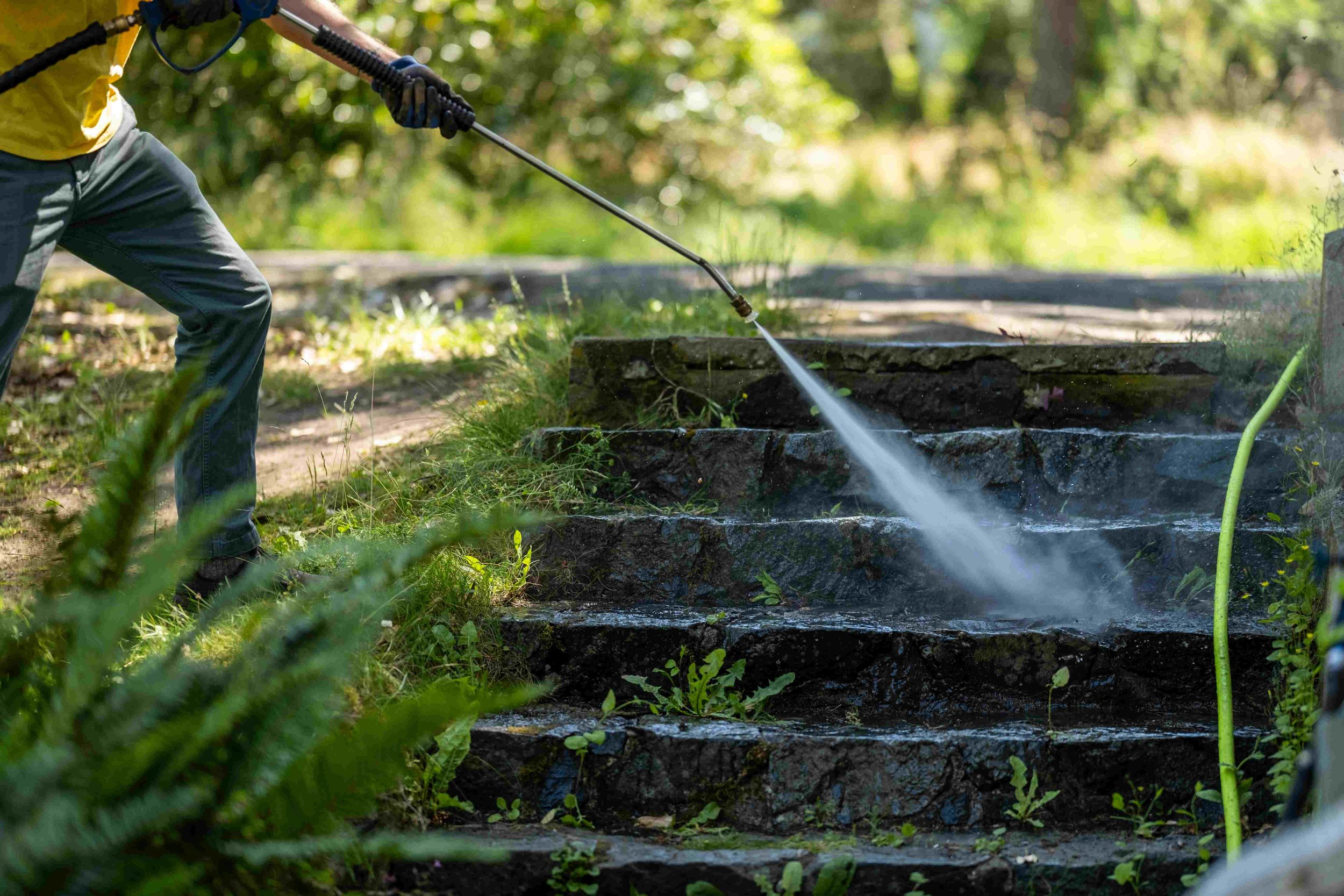Pressure Washing Wood vs. Concrete: Different Approaches
When it comes to pressure washing, not all surfaces are created equal. Wood decks and concrete driveways in Victoria BC face different challenges, from moss growth on damp wood to oil stains on porous concrete. Using the right technique on each ensures surfaces look good without risk of damage. Below, we’ll compare best practices for wood and concrete so you can tackle outdoor cleaning with confidence.
Wood Surfaces
Lower Pressure: High PSI can strip away wood fibers, leading to splinters and uneven textures.
Gentle Detergents: Mild, eco-friendly cleaners help lift grime without discoloring the wood.
Follow the Grain: Spraying along the wood grain prevents gouging.
Concrete Surfaces
Higher Pressure: Concrete is more durable and can handle greater force to remove oil or moss.
Pre-Treatment: Degreasers or specialized cleaners break down stains, making them easier to rinse away.
Consistent Distance: Hold the nozzle 12–18 inches away for an even clean without etching.
Local Considerations in Victoria BC
Our rainy climate encourages algae, moss, and mildew on both wood and concrete. Regular pressure washing or soft washing helps reduce slippery surfaces and keeps decks and driveways in top shape. A reputable service like LooksGood can advise on the best cleaning approach based on the level of buildup.
Protect Your Surfaces—Talk to Our Experts
Unsure whether to blast or gently rinse? Protect Your Surfaces—Talk to Our Experts at LooksGood.
Book Now! or call 250-896-9563 and let us match the right method for every corner of your property.
Frequently Asked Questions
Q: Can I use the same pressure for wood and concrete?
A: No. Wood generally needs lower PSI; concrete can handle a stronger stream.
Q: Should I seal wood after pressure washing?
A: Yes, applying a sealant or stain once the wood is fully dry helps preserve the finish.
Q: Are commercial degreasers safe for the environment?
A: Look for eco-friendly labels or consult professionals who use biodegradable products.


